Video of the Week:
Low Light Indoors? No Problem!
Upcoming Events:

January 12, 13 & 14, 2017
St. Joseph, MO
For more information, go to http://www.greatplainsgrowersconference.org
Ornamentals:
Caddo Sugar Maples
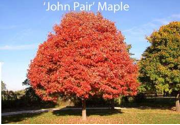
Another interesting characteristic of caddo maples is that they tend to retain their leaves in the winter and therefore have been suggested as screens or for use in windbreaks. Dr. John Pair, the late director of the Horticulture Center, selected and released two Caddo maples over 10 years ago. Both these selections color early and have consistent good red fall color. Drought tolerance and resistance to leaf scorch and leaf tatter are exceptional. However, neither will do well in a heavy clay soil that is frequently saturated. These trees can be damaged or killed if planted in wet sites.
The first selection, ‘Autumn Splendor’, has the traditional sugar maple growth pattern and needs plenty of room to mature. ‘John Pair’ is smaller and more compact and more likely to fit a residential landscape. This tree is also noted for a dense, uniform crown. If you are in the market for a sugar maple, consider these before making a final decision. (Ward Upham)
Miscellaneous:
Newer Lights Available for Indoor Gardens
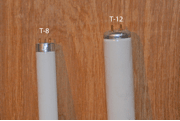
So, does a smaller diameter mean less light? Not at all. In fact, the T-5 can be the brightest of the three. Another advantage for these newer lamps is they use less electricity per lumen. The traditional 48-inch T-12 is rated at 40 watts. However, there are newer styles of T-12's that are 34 watts. The T-8 is rated at 32 watts and the T-5 at 28 watts.
This sounds too good to be true. Are there drawbacks? Maybe so or maybe not. First is cost if you have to replace T-12 fixtures to convert to a T-8 system. However, newer fixtures may be able to handle either T-12's or T-8's. Therefore, if you purchased fluorescent fixtures in the last few years, check to see if they are rated for T-8's before replacing them. Note that lamp costs are comparable between T-12's and T-8's. The T-5 lamps may be more expensive so check prices before converting.
The question becomes, is it worth it? If you have a T-12 fixture that is rated for T-12's only and are satisfied with your results, then maybe not. However, if you are investing in new fixtures or have fixtures that can use either T-12's or T-8's, then go with the T-8's. They will use less energy, last longer and provide more light. Prices for T-5's have been dropping so you may want to consider them as well.
The newest technology is LED lighting. LED’s have several advantages over other types of lighting including durability, long life, a cool running temperature and more latitude in choosing specific wavelengths of light. Traditionally, they have been very expensive but costs are dropping rapidly. We are starting to use LED’s as supplemental lighting in the University greenhouses but would suggest only using them on a trial basis at home until you see how they perform for you. (Ward Upham)
All-America Selection Winners for 2017
Descriptions and images below are taken directly from All-America Selection materials. For more detailed information including how to grow, see http://all-americaselections.org/product-category/year/2017/
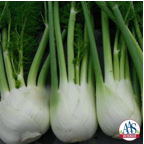
2017 AAS Edible – Vegetable Winner
This winner is a “First in Class,” as AAS has never before trialed and declared a fennel an AAS Winner. What is extremely fun about this winning plant is its many uses: as an edible bulb; for its ornamental fronds; as a seed producer; and as a favorite food of pollinators, namely swallowtail caterpillars. The AAS Judges described Antares as a very uniform, pure white, beautiful plant with a much improved, almost sweet, licorice/anise flavor as compared to other market varieties. It was also 7-10 days slower to bolt than comparison varieties. Many AAS Judges said they plan to plant this easy-to-grow fennel in their own gardens next year!
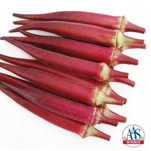
2017 AAS Edible – Vegetable Winner
A unique red okra with pods that are round, not ribbed, and a brighter red color than the reddish burgundy okras currently available. This high-performing AAS Winner received high marks for productivity, taste, texture and tenderness as well as the ornamental value of red pods on red stems. One judge noted that Candle Fire okra was quite maintenance free to grow, except for the frequent harvesting, which is a great thing! Candle Fire thrives in the heat and is disease resistant even in hot humid climates like the south where it’s perfect for traditional fried okra. Suitable for both fruit producing and ornamental usage. Aged fruit can be used in flower arrangements. Dry seed can be used as coffee (without caffeine.)
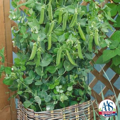
2017 AAS Edible – Vegetable Winner
This compact beauty produces sweet, uniform pods that are very tender when harvested early. With only 40 days needed to maturity, Patio Pride can be one of your first spring harvests or one of the last fall harvests from your Southeastern garden! This pea is wonderful when planted in containers and is ideal for succession planting yielding a consistent harvest over many weeks. Plant in patio containers with cool-season flowers for a beautiful combination ornamental and edible display.
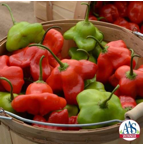
2017 AAS Edible – Vegetable Winner
This exotic pepper wins on uniqueness alone! However, the plant’s vigor, earliness, high yields, large size and awesome taste all contribute to its high score among AAS judges. Mad Hatter is a member of the Capsicum baccatum pepper species from South America commonly used in Bolivian and Peruvian cuisine. You can impress your friends by growing this pepper and showing off the novel three-sided shape and deliciously sweet taste. The taste has a refreshing, citrus floral flavor that remains sweet, only occasionally expressing mild heat near the seeds. Be prepared for vigorous and robust plants that are easy to grow because they were bred for North America’s many growing conditions. Use your
abundant harvest raw in salads, pickled or stuffed with cheese…a new favorite!
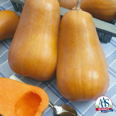
2017 AAS Edible – Vegetable Winner
Honeybaby is a very productive variety of winter squash producing numerous fruits on a compact plant. These shorter vines grow 2-3 feet in a semi-bush habit showing great garden vigor. Short, wide fruits are slightly larger, sweet and nutty and meatier than similar comparison varieties. Honeybaby is deliciously steamed, baked or made into soups and stews.

2017 AAS Edible – Vegetable Winner
The fourth addition to the popular Chef’s Choice tomato series is Chef’s Choice Yellow which produces hearty beefsteak type tomatoes in a beautiful yellow color. Tomato lovers and culinary gardeners will fall for this large meaty delicacy that has a sweet, citrus-like flavor with just the right amount of acid and the perfect tomato texture. AAS Judges raved about the quantity of the 10-ounce fruits that each 5-foot indeterminate vines produced. You’ll enjoy harvesting 30 or more fruits throughout the season from this disease (Fusarium Wilt, Verticillium wilt, Tomato Mosiac Virus, Crack, and Scab) resistant plant with dark green leaves and well-behaved form. You’ll be the envy of all your tomato-growing friends!
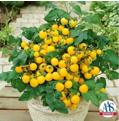
2017 AAS Edible – Vegetable Winner
Patio Choice Yellow is a new compact, determinate tomato developed specifically for small spaces and container gardens. This AAS Winner produces very large yields of ½ ounce bright yellow cherry tomatoes on short vines that grow only 18 inches tall. This mild flavored cherry tomato sets over 100 fruit on compact plants which are perfect for urban or small space food gardeners. Consider using these beautiful tomatoes either fresh or in the oven or sun dried for a deliciously sweet treat. For even easier picking, plant in a hanging basket.
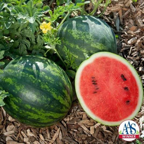
2017 AAS Edible – Vegetable Winner
This personal-sized Asian watermelon is perfect for smaller families and smaller gardens. Shorter vines (3-4 feet) still produce up to six fruits per plant and can be grown in smaller spaces. Several judges commented on the crack and split resistant rinds, important for reducing crop loss. For culinary purposes, this deep red fleshed watermelon has a thin but strong rind that can be carved into attractive shapes for fruit salad presentations. Mini Love has a high sugar content resulting in sweet and crisp, juicy flesh that will be a true summer delight for watermelon lovers.
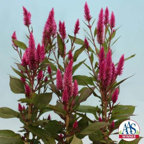
2017 AAS Flower Winner
This spiked beauty claimed victory in North America’s trial sites to become the first ever AAS Winner from Japanese breeding company Murakami Seed. The judges gave this entry high marks in the greenhouse for the good branching, almost bushy growth habit and early to bloom flower spikes. In the garden, Asian Garden Celosia continued to bloom on sturdy stems, keeping the bright pink color all summer long, holding up even through some of the first frosts of the season. The AAS Judges commented on the fact that this celosia was a pollinator-magnet, making this AAS Winner a sure bet for pollinator-friendly gardens.
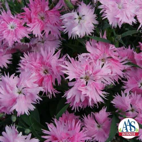
2017 AAS Flower Winner
Supra Pink joins its sister, 2006 AAS Winner Supra Purple, to give us two fantastic colors in an easy-to-grow interspecific dianthus for three-season (spring, summer, fall) garden color. This compact, bushy plant blooms prolifically with novel mottled pink flowers sporting frilly petal edges that hold up even in summer heat and drought. No deadheading needed on this winner. One judge attempted to deadhead this entry but it re-bloomed too fast to do so! Supra Pink grows to just under a foot in height but is a vigorous grower and will deliver fancy, clear pink flowers for a long time as observed over and over by the AAS Judges. Supra Pink was tested as an annual and won the award based on first-year performance, but similar to other dianthus, it may overwinter in some regions.
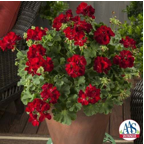
2017 AAS Ornamental Vegetative Winner
With an outstanding deep red velvety flower color and great branching habit, Calliope® was unmatched in the AAS Trials when compared to other market varieties. Calliope® Medium Dark Red geranium is an interspecific hybrid with zonal-type flowers and leaves. This AAS Winner has a mounded, semi-spreading growth habit with strong stems supporting the flower heads that are loaded with deep red blossoms. These plants work great in containers, combination plantings, hanging baskets as well as in an in-ground landscape. Gardeners will enjoy exceptional landscape performance in normal conditions as well as in more challenging high heat and drought conditions.
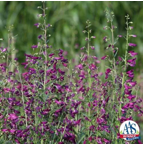
2017 AAS Flower Winner
Vibrant purple blooms present a new and unique color in penstemon! Twizzle Purple was judged as a first-year flowering perennial by judges who were impressed with the upright plant habit and superb flowering performance. This North American native blooms profusely with 1-inch tubular flowers on long slender stalks that grow up to 35 inches high, making this beauty a magnet for pollinators from mid- to late summer. Twizzle Purple can be used to add height to combination planters or in landscapes for high-impact color.
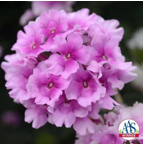
2017 AAS Flower Winner
EnduraScape™ is described as “tough as nails” because it is the first verbena that can tolerate drought and heat plus survive cooler temperatures down to the low teens. This long-blooming pink bicolor verbena is spectacular in the landscape, edging a walk or border as well as in large containers and baskets. Vigorous plants are sturdy spreaders that pop with abundant soft pink blossoms that darken in intensity toward the center of the bloom. Pink Bicolor is the newest color in the series and the AAS Judges deemed it truly spectacular!
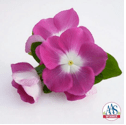
2017 AAS Flower Winner
Mega Bloom is an exciting new series of vinca bred to withstand heat and humidity without succumbing to disease. Orchid Halo produces huge bright rich purple blossoms with a wide white eye creating a striking look for the garden, even from a distance. Plants maintain a nice, dense habit with flowers staying on top of the foliage for full flower power color. Growers will like the early bloom time, compactness in the greenhouse and plant uniformity.
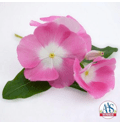
2017 AAS Flower Winner
Mega Bloom is an exciting new series of vinca bred to withstand heat and humidity without succumbing to disease. Pink Halo produces huge soft pink blossoms with a wide white eye. These flowers present a striking look in the garden, even from a distance. Plants maintain a nice, dense habit with flowers staying on top of the foliage for full flower power color. Growers will like the early bloom time, compactness in the greenhouse and plant uniformity.
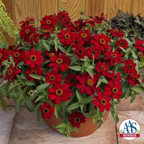
2017 AAS Flower Winner
This newest Profusion Zinnia winner is the fourth color in the single flower series to win the coveted AAS Winner award. The original Profusions were ground-breaking plants because of their compact form, disease resistance, early and continuous blooms all season long and ease in growing. Judges raved about the vibrant, perfectly true red color of this zinnia which doesn’t fade in summer’s intense rays. As one judge stated, “We have waited for years for this true red color in zinnias!” Gardeners will find many uses for the true red zinnia that’s easy to grow and a favorite of pollinators. Uniform plants and outstanding greenhouse and garden performance will be especially important for growers producing Profusion Red for retail sales.
Contributors: Ward Upham, Extension Associate
 RSS Feed
RSS Feed
